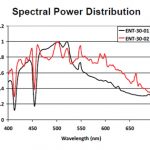Several years ago I made an amazing discovery about automated lights — they actually make noise when they’re on. I know, I know — I was as shocked to learn this as you are. Up until that point, all of my experience had led me to believe that those babies were silently operating behind the 115 dB wall of sound produced by whatever band happened to be on stage at the moment.
The moment of elucidation came when I was trying to place several automated lights on a major television show and the light director informed me that there was a problem. The audio engineers were complaining about the noise emanating from the general direction of the eight automated fixtures. No problem, I thought; just make sure they weren’t moving when the band wasn’t playing and no one would be the wiser. But I was surprised to find out that it wasn’t the panning and tilting that the audio engineers were picking up, but the fan noise. They said something about the frequency being in the vocal range and they weren’t happy.
In the early days of automated lighting, there was no such thing as a quiet version of moving lights. They either made noise or they weren’t on. But due to the popularity of the technology, manufacturers began addressing the issue by offering specially engineered versions of automated lights designed to reduce the noise rating factor by using noise absorbing foam and baffles. The first version that I recall was the Cyberlight SV — “SV” for “Studio Version.” It had an acoustic baffle that was tuned to the frequency of the fan and was supposed to cut the noise in half. There are now many other automated lights with similar designs, such as the Vari*Lite VL 3000 Series Q — “Q” for “Quiet” version.
Of course, there are also several automated lights without any fans at all. These fixtures have incandescent lamps with convection cooling. Among them are Martin’s MAC TW1, High End Systems’ Studio Command Halogen, Robe’s ColorWash 750 AT Tungsten, ETC’s Revolution, and Vari-Lite’s VL1000 Tungsten.
But the absence of forced air cooling doesn’t necessarily translate to completely silent operation. There are other moving parts, and moving parts can be noisy parts, particularly fast moving parts. When a fixture pans or tilts, the stepper motors, gears, and belts produce varying amounts of noise, depending on their speed of movement. Stepper motors also have a resonant frequency and when they hit that certain speed they whir the loudest. Most luminaire manufacturers are well aware of those resonances and they write acceleration curves that avoid those motor speeds that produce resonance, thus reducing the whirring sound. And there are also yokes such as City Theatrical’s AutoYoke and Apollo Design’s Right Arm that are designed to reduce pan and tilt noise by using a high gear ratios.
Still, there’s nothing like theatre silence to bring out even the slightest noise in your gear. Therefore, it’s a good idea to take precautionary measures to prevent, minimize and mask as much noise as possible.
Precautionary measures to reduce noise include gear selection, soft goods masking and proper programming. We’ve already discussed options for gear selection, and if you have the budget to rent or buy silent versions of automated lighting, then you’re starting out on the right foot. But you can also use soft goods to help mask not only the line of sight from the house, but also the line of sound. Borders and legs made of heavy velour are great noise sponges. As for programming, common sense tells us to avoid fast pans and tilts during quiet passages.
Minimizing noise is a matter of reducing the speed of panning and tilting as much as possible. Even though the software engineers work hard to avoid those resonant stepper motor speeds, nothing quiets a stepper motor like a very slow movement. One trick that works very well is to create a mark cue to move the fixtures without being seen. A mark cue is a preparatory cue that moves in black out to the new focus position before fading up. For example, if you have a fixture on an actor downstage center and the next cue is upstage center, you can keep a second fixture in black and move it into position before fading fixture one to black and fading fixture two to full. The cue to move fixture two upstage in black is a mark cue. It doesn’t matter how fast a mark cue is executed because it’s not seen. So make your mark cues as slow as possible but don’t miss your next cue.
Lastly, mask as much noise as possible by making judicious choices about when to move your lights — during scene changes, during loud passages, and between the action on stage are logical places to refocus lights when necessary. Remember, just because they can move doesn’t mean that automated lights have to move.
If none of this seems to work well enough, then the only logical thing to do is to get a really loud band on stage.
